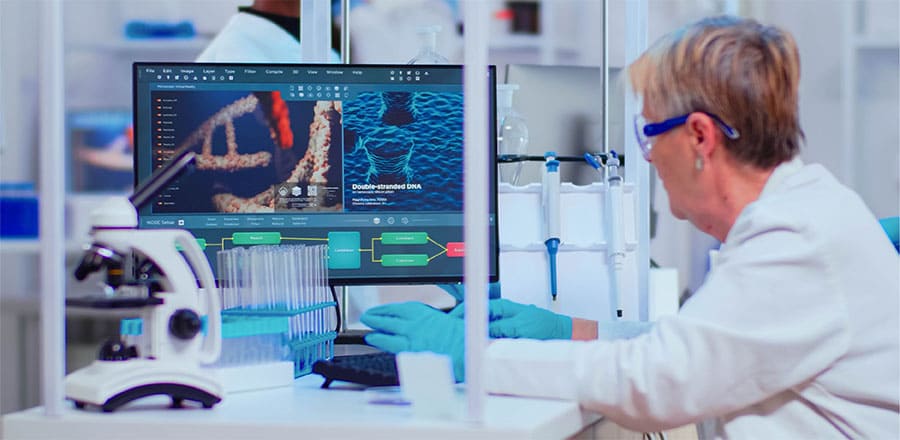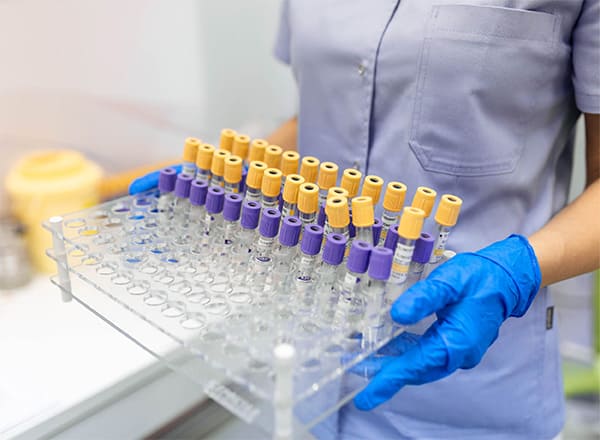More profitable laboratory: automation in sample receipt
Thursday 1 February 2024

More profitable laboratory through automation in sample receipt
Preanalytics can make a major contribution to increasing productivity in the clinical laboratory. Here, automation simultaneously reduces the workload on staff, speeds up processes considerably and significantly reduces the error rate.
There are very differently organized healthcare systems around the world, from which a wide variety of structures have developed in which clinical laboratory analyses are carried out for patients. However, laboratories worldwide have one thing in common: they must work as efficiently, error-free and profitably as possible.
The first focus is on the analysis itself, for which a wide range of automation solutions are available. Even if only a few or no more analyses are carried out, the high medical qualification of the employees is still necessary in the automated laboratory in order to arrive at correct evaluations of the measurement results and to create the correct findings for the patients from these. The automation of the core process thus serves to ensure consistently high test quality and freedom from errors as well as the possibility of processing a larger sample volume with the existing staff.
However, the workflows surrounding the analysis also deserve a great deal of attention, because the weakest link in the process chain limits the overall performance of the laboratory. The focus is particularly on preanalytics, i.e. all activities between the arrival of the samples in the laboratory and their feeding to the analysis machines, which usually have to be carried out under high time pressure.
Here it is necessary to record the arrival of all samples in a timely manner, to compare the available samples with the orders, to sort all samples so that they can be forwarded to the various points in the analysis quickly and correctly without having to be re-examined.
So-called “bulk sorters” often take over most of the work, which is most prone to errors. With such devices, the loose samples can be identified by barcode and cap color and reported to the LIS. The samples are then sorted according to the response from the LIS.
Thus, the basic requirements for automation in preanalytics are fulfilled, but the low degree of automation limits the possible increases in productivity. For a considerable proportion of samples, manual qualified sorting and registration in the LIS by permanently present medical staff are still necessary.

However, when these tasks have to be carried out close-up under time pressure during peak times, even experienced employees reach their limits and error rates inevitably increase. Intelligent sorters of the latest generation help at this point, can also optically capture and recognize everything that a trained employee can see and process it correctly on their own responsibility.
They recognize which type of tube was used, are able to read carelessly applied barcodes and optical features that go beyond the cap color to identify the samples. The trained “digital eye” can even judge whether the sample has been sufficiently centrifuged.
Such devices can even make their own sorting decisions if they have been trained to do so. For example, if they recognize that an identical sample to one already collected is present and this is intended for a different analysis on another analyzer.
With this scope of performance, such intelligent sorters can work largely independently without personnel being present, which is the first time that a relevant relief of medical staff for qualified tasks is possible.
With this high level of automation in preanalytics, the number of cycles can then be increased without the risk of increased error rates, which is why these devices are designed to process a sample every second. In this way, every peak in the laboratory is processed quickly and confidently, while each processed sample is documented with a time stamp, detected characteristics, sorting target and a 3D photo of the sample in its delivery state.

Automation in preanalytics should always match the degree of automation of the analytics. If state-of-the-art high-throughput analyzers are in use, their potential cannot be fully exploited in practice if scarce medical personnel are tied up in preanalytics because this is the bottleneck in the processing chain and slows down all subsequent processes.



